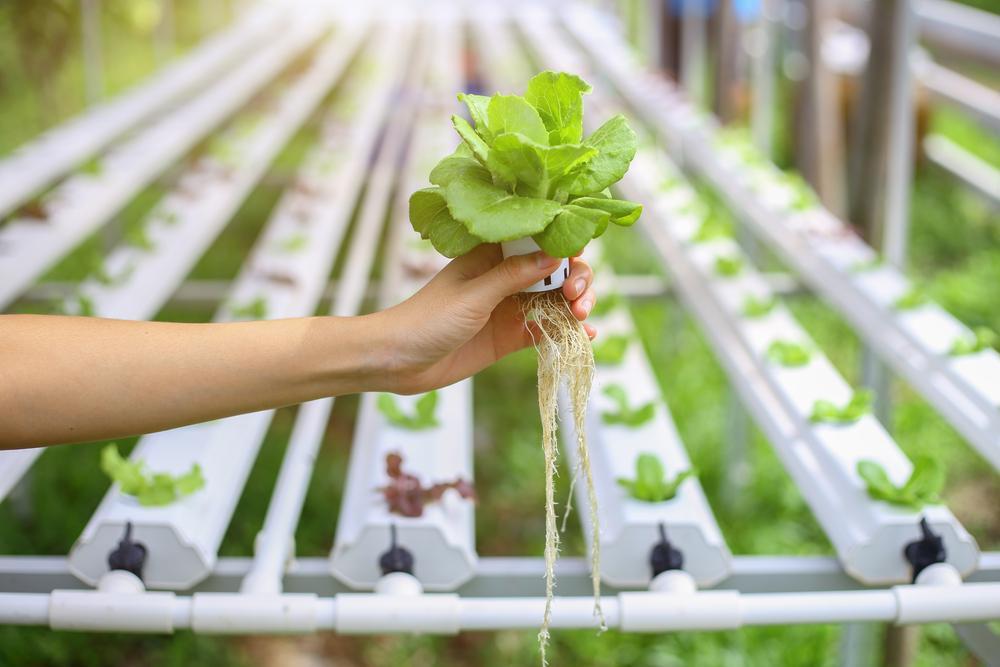Hydroponic gardening is a great way to grow crops all year round all the while optimizing resources and harvesting bountiful yields! You can use up to 99% less water in a hydroponic system compared to a traditional garden. Your hydroponic plants will also grow faster and produce more.

Keep reading to learn how to start your own hydroponic garden!
-
Why You Should Start Your Own Hydroponic Garden at Home
You should definitely start your own hydroponic garden at home!
Hydroponic gardens quickly provide fresh, nutritious food free from pesticides. You can garden all year round with high yields and little effort. You don’t need a large plot of land or high quality soil either- limited space will suffice!
Likewise, hydroponic gardening can use up to 99% less water than traditional gardening! It utilizes resources much more efficiently and is the future of food.
-
Different Kinds of Hydroponics Systems
There are many different kinds of hydroponic methods to choose from. Some hydroponics systems have steeper learning curve than others, but ultimately anyone is capable of using any hydroponic system.
Let’s talk about deep water culture, nutrient film technique, the wick system, and ebb and flow systems!
-
Deep Water Culture
Deep water culture (DWC) hydroponic systems are unique because the plant roots are suspended in your nutrient-enriched water indefinitely rather than being periodically flooded. They’re held in a container with water, known in the hydroponics world as a reservoir.
DWC hydroponic systems must use air pumps and air stones in order to properly oxygenate the plant roots to avoid them from drowning and prevent root rot.
-
Nutrient Film Technique
Nutrient film technique (NFT) is an effective method consisting of pipes carrying a very shallow flow of fertilizer-enriched water being pumped throughout the system. Your plants are held up by a growing medium inside of holes on the top of the pipes, with the roots sucking up the nutrients from the constant flow of water below.
NFT has a couple moving parts and is a slightly more advanced system with a bit of a learning curve.
-
The Wick System
The wick system is as simple as it gets. A nylon or cotton wick simply sucks up your water-nutrient solution from the reservoir and delivers it to your plants above. Once the wick dries out, the process repeats!
-
Ebb and Flow
Ebb and flow hydroponic systems are also known as flood and drain systems. Ebb and flow systems utilize a flat tray held above your reservoir (which contains your water and nutrient solution). The grow tray holds your plants and growing medium.
Your grow tray is periodically flooded with a water-nutrient solution via water pumps. The number of times this flooding happens each day depends on what plants you’re growing and how much water your growing medium retains. This mechanism is almost always on an automatic timer.
-
Elements of Hydroponic Gardening
Now that you have the rundown on different kinds of hydroponic systems, let’s discuss all the other aspects of hydroponic gardening.
-
Light
There are lots of different artificial light sources you can choose from: LED’s, HID’s, fluorescents, or even just a simple window.
Different kinds of light bulbs give off different spectrums of lights as well as heat levels. For example, you wouldn’t want to use HID lights on seedlings in fear of scorching them!
Fluorescent lights are the gentlest, but also the most wallet friendly. They’ll suffice for many plants.
HID’s are the most intense, with LED’s falling somewhere in the middle.
If you’re growing outdoors, be sure to know how many hours of light per day that your plants need and put your hydroponic setup somewhere in your yard where the natural light will be adequate.
-
Temperature
Each plant has a specific temperature range in which it thrives. You need both your ambient temperature and your water temperature to be within that range.
This is one of the largest reasons that you can grow hydroponically all year long. Plants that would normally freeze during a frost are safe and sound inside!
-
Nutrients and pH
Likewise, specific plants like a specific pH range. As a rule of thumb, anywhere between 5.8 and 6.3 is usually sufficient. The right pH allows your plants to uptake as many nutrients as possible.
You need to know the NPK value of the plants you’re growing in order to provide the correct hydroponic nutrients. You can’t just use any liquid fertilizer mix, as they typically rely on soil to provide some of the nutrients. It’s important to get a hydroponic fertilizer for this reason.
-
Final Thoughts
Clearly, hydroponic gardening has many perks. While you need to know the basics, it’s easy to get a hang of beyond that. You don’t have to always grow edible plants, either- hydroponic flowers are a great way to have bouquets whenever you want!
Now that you know how to start your own hydroponic garden at home, check out the rest of our blog to learn about different kinds of crops you can grow!
Image source: depositphotos.com





